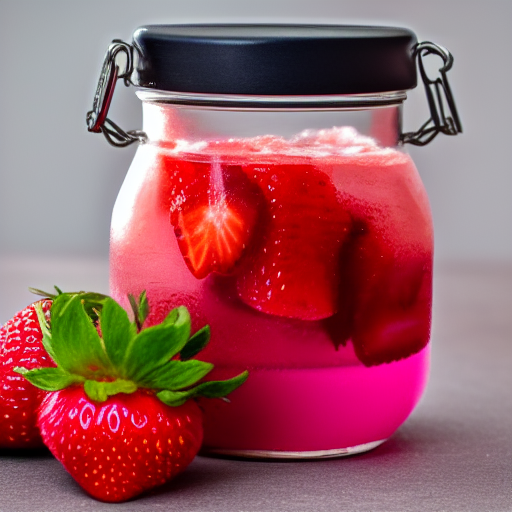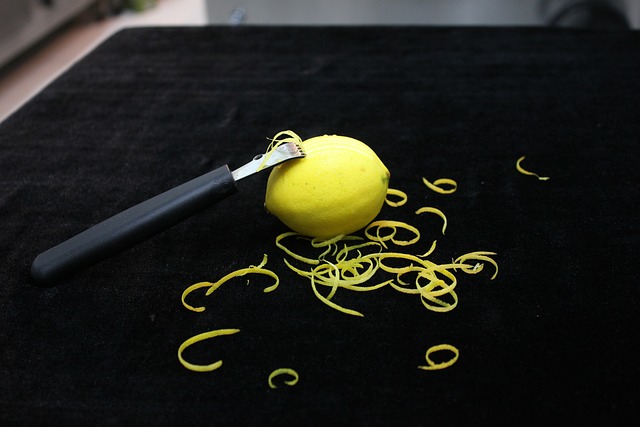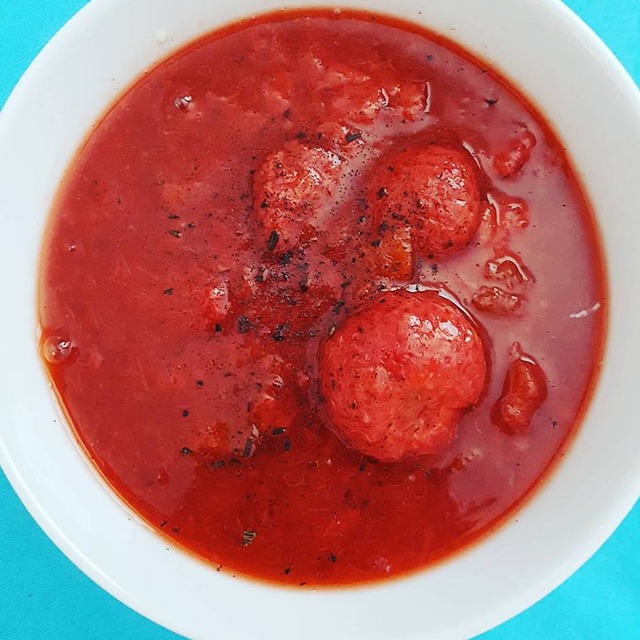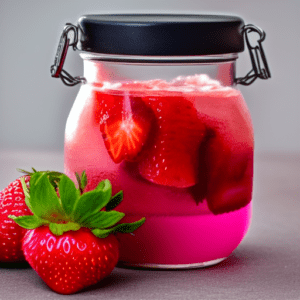There is nothing quite like the surprise of biting into a pickled strawberry for the first time. The tart and tangy flavour of the pickling vinegar is a perfect contrast to the sweetness of the strawberries. Not only are they delicious, but pickled strawberries also make a beautiful presentation on a plate.

Pickled strawberries have the same beautiful flavour as fresh strawberries, but they acquire complex, bright, slightly spicier and tangier nuances from the pickling solution in which they are bathed. The result is a unique taste that expands the enjoyment of strawberries from a predominantly sweet preserve into so many more exciting possibilities and uses.
In contrast to other pickles, the strawberries are not pickled for too long. You give them just enough time to pack a punch of flavour whether eaten with a fork on its own or used to enhance a range of meals. You will get so mauch more out of this if you consider it as a versatile condiment rather than the usual strawberry role of a sweet preserve.
Once you have enjoyed the pickled strawberries, save the remaining vinegar – now enhanced with a light strawberry flavour – to mix with olive oil for a fruity, fresh salad dressing.
TIPS:
- Use ripe and firm strawberries. Choose fruits that are of similar size and that can fit into your glass jar. You can cut the larger strawberries into halves. Make sure that none of the strawberries is bruised or damaged and they can hasten the spoiling of the rest of the pickle.
- The most commonly used pickling vinegar is distilled white vinegar, which is what is used in this recipe.
- Sugar and salt enhance the flavours as well as being an important part of the preservative pickling solution.
- Grated ginger works well with the strawberry flavour and brings a fresh warmth to the mix.
- Whole peppercorns for a bit of warm spiciness – another surprise is that this potent flavour works well with the sweetness of the strawberries. Green or pink peppercorns are mild compared to bold black peppercorns. Any of these will work in this recipe.
- Herbs – the choice is yours and depends on what you prefer and what you have available. The most well-known herb accompaniments for strawberries are mint or thyme, but basil or rosemary can also turn up the volume in this pickle. Bay leaves to round out the flavour combinations.
- Use glass jars to enjoy how good this preserve looks.
Additional flavour options:

- Add thin slivers of finely sliced lemon peel for a refreshing zing.
- Add star anise, cinnamon or all-spice for a more exotic experience. (Just choose one to avoid overpowering the unique strawberry flavour).
Suggestions on How to Use Pickled Strawberries
- As a garnish for cocktails or mocktails.
- Add to a summer salad with feta cheese with mixed greens.
- Serve as an accompaniment to grilled meats or BBQ dishes.
- Enjoy with a platter of cheeses, some crusty bread and a glass of white wine.
- As a condiment to accompany grilled chicken, beef or pork – diced up and spooned over the meat or alongside.

- Make a strawberry salsa or add the pickled strawberries to a classic salsa to turn up the flavour volume.
- Blend and warm and drizzle over grilled vegetables, fruit or meat.
- Maximise the sweet-and-sour contrast and add to a fresh fruit salad, and even as a vanilla ice cream topping.
This strawberry pickle invites you to a range of sweet-savoury possibilities that are waiting to be discovered. Now that you are curious about this less well-known strawberry presentation, come on, just give it a try – you may never look back!
For more information see RESOURCES and RECIPES.

Pickled Strawberries Recipe
Equipment
- Non-reactive saucepan
- Spoon to stir
- Ladle
- Funnel
- Grater
- Chopping board and knife
- Clean freshly sterilised glass jars and non-reactive lids
- Labels and pen
Ingredients
- 1 kg strawberries(2 lb) ripe, but firm,
- 250 g white sugar
- 2 tsp salt
- 420 ml white vinegar
- 230 ml water
- 1 tsp grated fresh ginger
- 2 tsp black peppercorns
- 10 sprigs thyme
- 2-4 bay leaves
Instructions
- Wash the strawberries and drain off excess water. Then remove the green stems, or 'hull' the strawberries i.e. taking off their tops.
- Grate the ginger. Use as much or as little according to your taste preference.
- Rinse the thyme and remove any woody parts or damaged leaves (or your chosen herbs).
- Start packing the ingredients into the sterilised glass jars. Alternate the different ingredients, namely, add some herbs then peppercorns, and then the fruit, and repeat until the jars are filled to close to the top. Include a bay leaf in each jar.
- Add the vinegar, sugar, salt and ginger and water to the non-reactive pot, and heat to bring the mixture up to a boil for 2 minutes. Stir the solution to encourage the sugar and salt to dissolve.
- Turn down the heat and let the pickling solution simmer for 5 minutes.
- Set the pot aside to cool for 5 minutes, then pour the liquid into the packed jars. Make sure that the pickling liquid soaks through all the layers and that all the jar ingredients are submerged to benefit from the flavours and to preserve the contents by excluding air.
- Once the jars have cooled down to room temperature, put on their lids and refrigerate immediately.
- As with all pickles, they need a bit of time for the flavours to meld and the sharpness of the vinegar to soften. Leave them to develop for 12 hours, up to 48 hours. The flavour intensifies over time, which you will discover if it lasts long enough! The strawberries will slowly become paler and softer with time, but still delicious.
- These pickled strawberries can last for up to 2 weeks in the refrigerator as long as they are kept tightly sealed. Discard if you find any signs of fermentation, mould or whether you are in doubt.
Notes
TIPS:
-
- Use ripe and firm strawberries. Choose fruits that are of similar size and that can fit into your glass jar. You can cut the larger strawberries into halves. Make sure that none of the strawberries is bruised or damaged and they can hasten the spoiling of the rest of the pickle.
-
- The most commonly used pickling vinegar is distilled white vinegar, which is what is used in this recipe.
-
- Sugar and salt enhance the flavours as well as being an important part of the preservative pickling solution.
-
- Grated ginger works well with the strawberry flavour and brings a fresh warmth to the mix.
-
- Whole peppercorns for a bit of warm spiciness – another surprise is that this potent flavour works well with the sweetness of the strawberries. Green or pink peppercorns are mild compared to bold black peppercorns. Any of these will work in this recipe.
-
- Herbs – the choice is yours and depends on what you prefer and what you have available. The most well-known herb accompaniments for strawberries are mint or thyme, but basil or rosemary can also turn up the volume in this pickle. Bay leaves to round out the flavour combinations.
-
- Use glass jars to enjoy how good this preserve looks.
Additional flavour options:
-
- Add thin slivers of finely sliced lemon peel for a refreshing zing.
- Add star anise, cinnamon or all-spice for a more exotic experience. (Just choose one to avoid overpowering the unique strawberry flavour).
Suggestions on How to Use Pickled Strawberries
-
- As a garnish for cocktails or mocktails.
-
- Add to a summer salad with feta cheese with mixed greens.
-
- Serve as an accompaniment to grilled meats or BBQ dishes.
-
- Enjoy with a platter of cheeses, some crusty bread and a glass of white wine.
-
- As a condiment to accompany grilled chicken, beef or pork – diced up and spooned over the meat or alongside.
-
- Make a strawberry salsa or add the pickled strawberries to a classic salsa to turn up the flavour volume.
-
- Blend and warm and drizzle over grilled vegetables, fruit or meat.
-
- Maximise the sweet-and-sour contrast and add to a fresh fruit salad, and even as a vanilla ice cream topping.
Nutrition
Nutritional Disclaimer
All nutritional information is an estimate only, based on third-party calculations derived from an online nutritional calculator, Spoonacular API. The data provided is a courtesy and should not be considered a guarantee or fact. Each recipe and nutritional value will vary depending on the ingredients and brands you use, your measuring methods and portion sizes. For accurate results, we recommend that you calculate the nutritional information yourself, using a preferred nutritional calculator or advice from a nutritionist, based on your ingredients and individual processes.